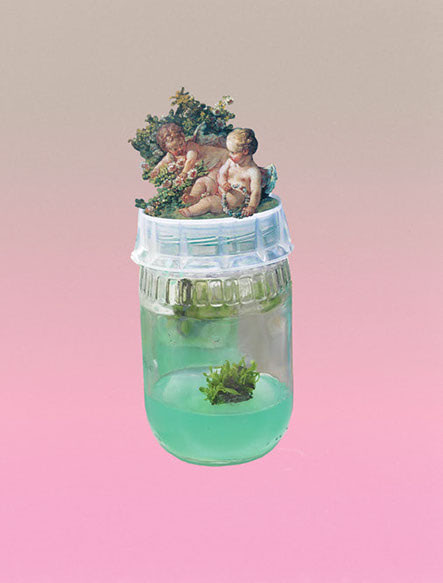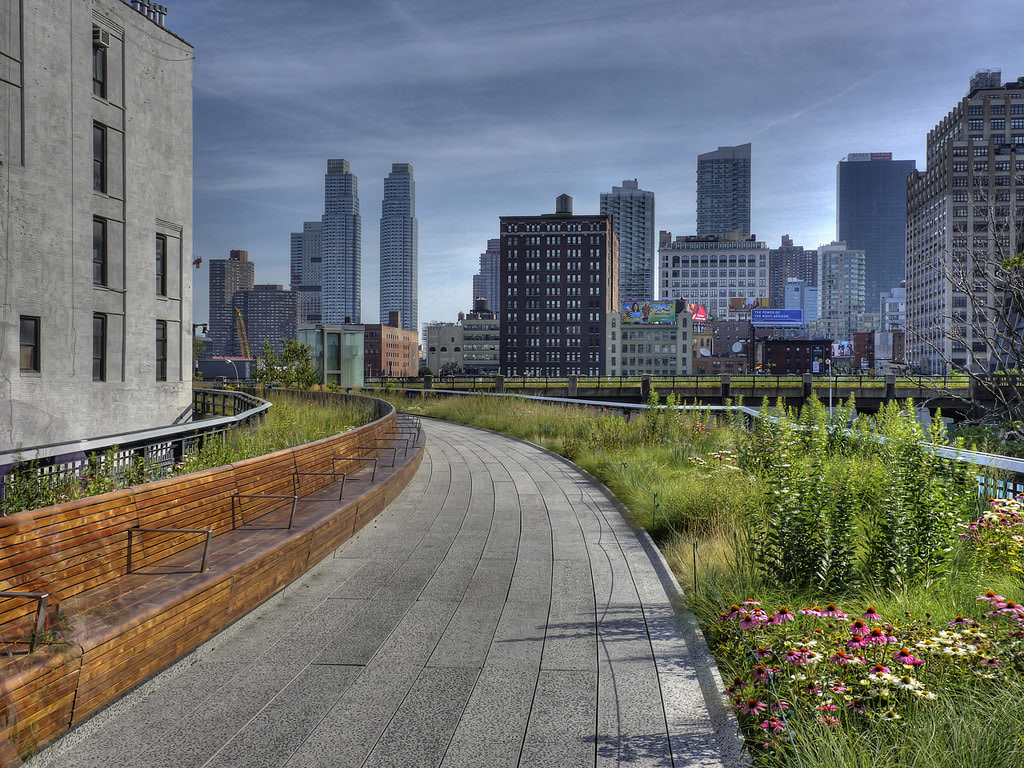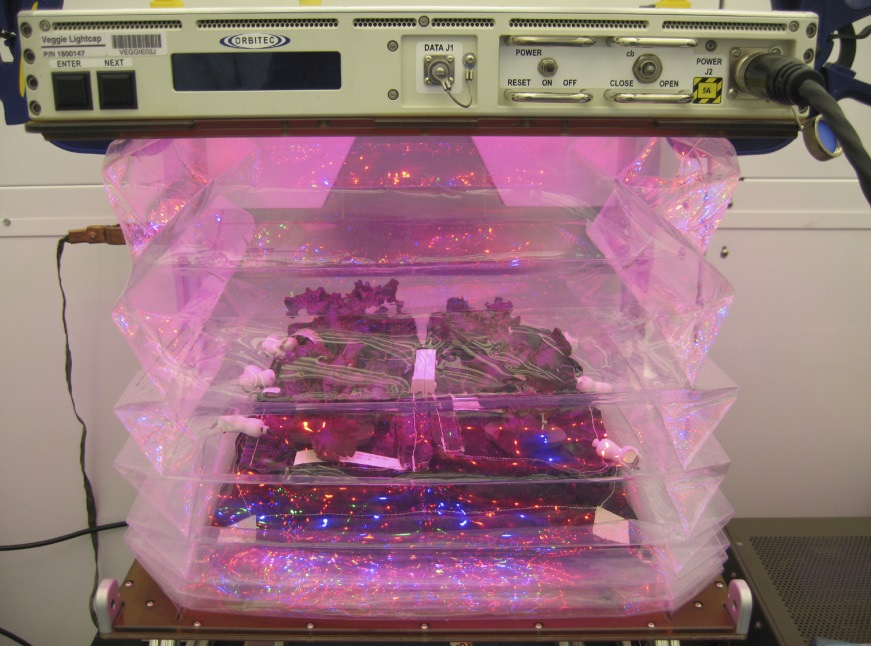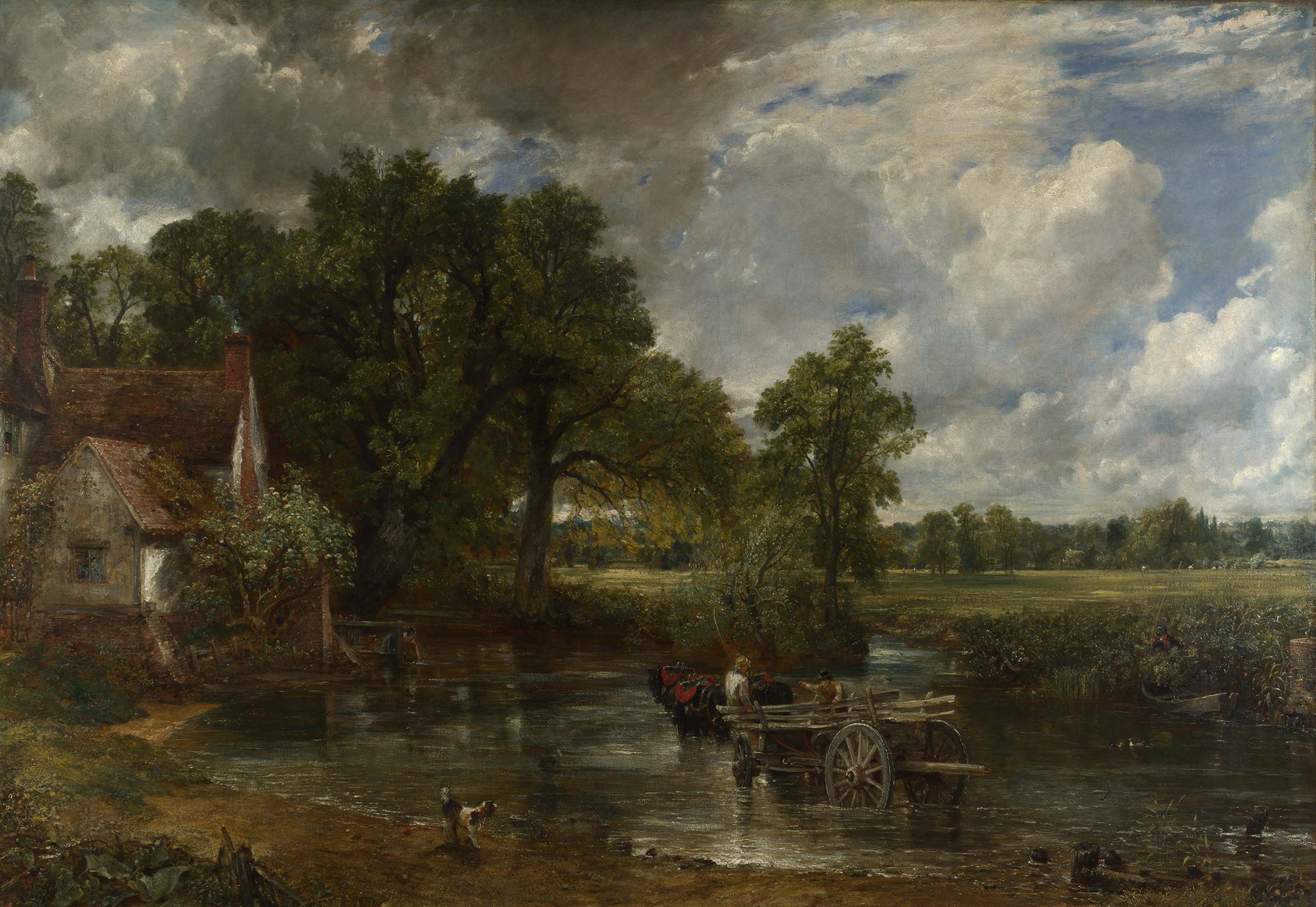Lunar Insurrection is a group of architects that explores the creative possibilities of the moon as a potential territory for human activity and inhabitation. In Vol.2, their approach is based on a juxtaposition of two themes that are generally considered separately: the pastoral and technological science fiction.
 The cover of Lunar Insurrection's second publication. Here we see two very different things juxtaposed. On one hand, two cherubims depicted in the style of XIX century pastoral paintings; on the other, a flask where a small plant is being grown in a green, near-opaque liquid.
The cover of Lunar Insurrection's second publication. Here we see two very different things juxtaposed. On one hand, two cherubims depicted in the style of XIX century pastoral paintings; on the other, a flask where a small plant is being grown in a green, near-opaque liquid.
"Already, NASA's vegetable growth experiments have given us surreal images of candy colored plant-matter that are both scientifically thrilling and seductively beautiful. Science fiction & the pastoral, it seems, are not such different modes. (...) Both are based upon the wish-image of a certain landscape: one is staged in outer space, and the other in the garden; in the image of a cultivated moon, these environments are synthesized".
What does this mean? Firstly, the pastoral is understood as the cultural idea of a cultivated nature, perfectly harmonious, groomed and suited to our purposes as human beings. The desire to manufacture our landscape, in a way that makes it at once comfortable and beautiful, is very old in humans. The garden is the manifestation of this drive; it is a place where we make nature "lovable - that is, neutered and groomed".
 NYC's Highline
NYC's Highline
The Lunar Insurrection members argue that we should not dismiss the fantasy of the pastoral as simply "nostalgic primitivism". While the garden has lost much of its meaning as "tamed wilderness" (because there is so little real "wilderness" nowadays), we now witness the rise of its successor, the "man-altered landscape".
"The persistence of the garden fantasy is easily studied today in the vibrant evolution of the urban park; from Olmsted's Central Park to the High Line, the revered green spaces of our cities are an attempt to reconcile green nature with the industrial and the urban". In fact, the garden is such a powerful archetype on the human mind that it does not surprise us that the Eden was a garden. Better yet, the fact that so many myths throughout the world see the birthplace of man as a perfect garden speaks to the power of this longing for nature that, in one way or another, still exists in humans to this day. How would this fantasy manifest itself on the moon?
THE AESTHETICS OF THE SCI-FI PASTORAL
NASA, art and science fiction experts dabble in different ways with the idea of growing "gardens" on the moon and other places outside of the Earth. They show us fictional scenarios where the creative possibilities of a cultivated moon are explored. Lunar Insurrection tread the line between technology, art and nature, and invite us to consider new kinds of Eden in new worlds. And in order to do this, they explore the aesthetic that results from these considerations: the sci-fi pastoral.
This volume shows us many images of hypernatural elements and highly technological cultivating environments where kitsch,19th century depictions of harmonious and pastoral landscapes coexist.
 Lettuce being grown aboard the ISS
Lettuce being grown aboard the ISS
Space travel and lunar colonization demand that we think about our food and about how it can be grown outside of our conventional habitats. For thousands of years, the way we grow our sustenance has determined the way our habitats look - but now, in the moon, the conditions of our habitat will determine how we grow our sustenance. Above we see a NASA experiment featured in Vol.2 where red romaine lettuce is grown inside a vegetable production unit within the International Space Station.
Therefore, the argument made in this publication is that we should not only grow our vegetables on the moon, but that we should "mimic the essential interdependence of human life and that of our cultivars here on earth". Just like, during the 19th century, man's relationship with agriculture and with cultivated nature in general was appropriated by culture and made into a whole aesthetic - the pastoral - Lunar Insurrection now brings this interdependence into the moon.
If pastures, traditional ploughs and rural landscapes are part of the aesthetic of man's harmonious interdependence with nature on earth (in the 19th century), then gardener-robots, silica substrates and hydroponic watering are part of the aesthetic of that same interdependence but on the moon.
One of the most notable aspects of the work of Lunar Insurrection is how the legitimacy of the "pastoral" - as a cultural narrative - is fully embraced. Its value is considered as something essential in the relationship between humans and nature. As it is mentioned in the publication: "It was an artistic, literary, even political mode that arose from ancient western history and dominated the american psychology towards landscape from Thomas Jefferson's time through the late 19th century". The pastoral and the garden in particular often offer insights into the relationship we have with our environments at any given time.
So, in other words, these are not simply nice paintings of an outdated rural landscape. In them we can see a whole mode of relating ourselves with our sustenance, our environments and their "natural" character. Therefore, Lunar Insurrection, in Vol.2, and through the exploration of the sci-fi pastoral, explore a similar kind of harmony and interconnection with our lunar, non-earthbound next natures.
Source: Lunar Insurrection Vol.2
Cover Image: John Constable, The Hay Wain

Share your thoughts and join the technology debate!
Be the first to comment